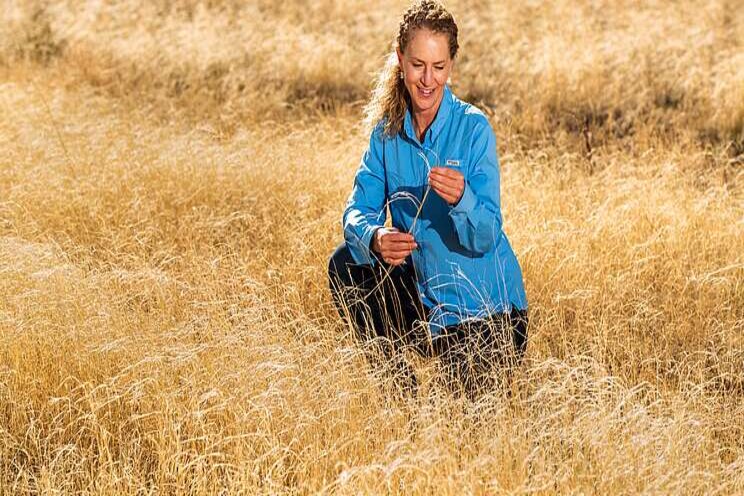Vertical farms could grow all the wheat we need
Added on 05 August 2020

The global population eats a lot of wheat. It's the most widely grown crop in the world, and it accounts for approximately 20% of the calories and proteins in the average human diet. As the global population grows, we'll need more of it to sustain humanity. With arable land a premium, the new study looks at if vertical farming—a method of growing crops in vertically stacked layers—could help.
To find out, the authors created two growth simulation models of a 10-layer vertical farm set up with optimal artificial light, temperatures, and carbon dioxide levels. They found that the simulation could yield up to a whopping 1,940 metric tons of wheat per hectare of ground per year. For context, the current average wheat yield is just 3.2 metric tons per hectare of land.
It makes sense that the authors would be looking into this now. Globally, one in nine people already face hunger, and the problem could become more acute as the population increases. The world could have to produce more than 60% more wheat to account for population growth. That won't be easy; rising temperatures and other changes in growing seasons driven by the climate crisis are lowering crop yields around the world.
The new study offers an insight into how address some of these problems. But right now, scientists are only offering simulations. Actually bringing these massive wheat crop yields to fruition would come with massive challenges.
For one, vertical farming is wildly expensive. It requires massive amounts of energy to work, especially because unlike traditional farming, it requires artificial lighting systems. The authors say their simulated systems would provide a light intensity for the crops 30 to 50% greater than directly overhead sunlight. Watering systems and technology to ensure optimal temperature and air quality conditions in these indoor environments would also be costly—not to mention energy-intensive. Depending on how the systems are powered, that could be a problem for the climate. Previous research shows that powering these systems could require vastly more energy than our current high-emissions food system.
"No one has ever attempted to grow food crops under artificial lighting that's as strong as sunlight, much less stronger, for the simple reason that it would require too much energy," Stan Cox, a scientist and plant breeder at the Land Institute in Salina, Kansas, said in an email.
The new study's authors note that recent innovations in solar energy are lowering the costs of electricity and lighting is becoming more efficient, but note crops grown this way are still not likely to be economically competitive with current market prices of agriculture. Cox found that to be an understatement.
"A decade ago, given the amount of light wheat plants require to produce one pound of grain, I calculated that growing the entire U.S. wheat crop indoors would consume eight times the country's entire annual electricity output," he said. "That was before recent advances in lighting efficiency. So, hey, maybe it would now use up only four to five times our total electricity supply! For one crop!"
Innovations in automation, the authors note, could further lower the costs of vertical farming. That may be true, but in our current economic system, that could be a problem for farmworkers, who are already seeing their pay get cut. For these reasons and more, vertical farming has been a controversial topic in agricultural and environmental circles.
The new study's authors note that there are also many unanswered questions about growing wheat in indoor facilities. It's not clear, for instance, what the nutritional value and quality of indoor-farmed wheat would be, or what diseases could arise in such facilities.
Though their projected crop yields are exciting, even if vertical farming does work, it can't be the only solution to our agricultural issues. Other systemic changes, including reducing food waste, moving away from meat-centric agricultural systems, diversifying crops, and improving soil health, should also play a role.
"Under specific circumstances, and if the energy cost and profitability issues can be resolved, indoor vertical wheat farming might be attractive," the authors conclude. "Nonetheless, the outcomes described here may contribute only a relatively small fraction (yet to be determined) of the global grain production needed to achieve global food security in the near future."
By Dharna Noor
Source: Gizmodo
Photo by Science in HD on Unsplash
Source: Gizmodo
More news















